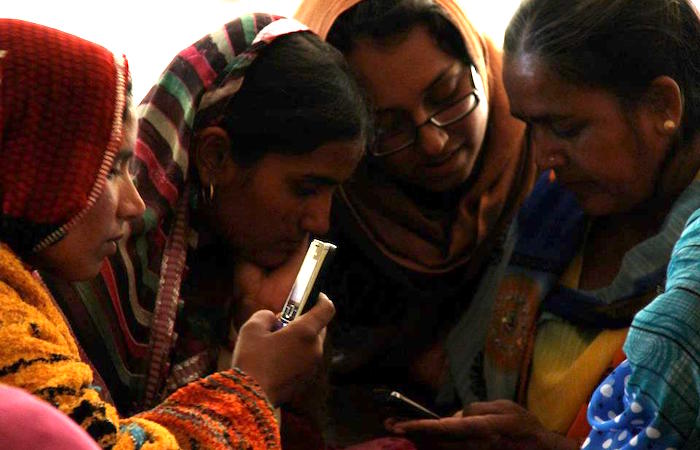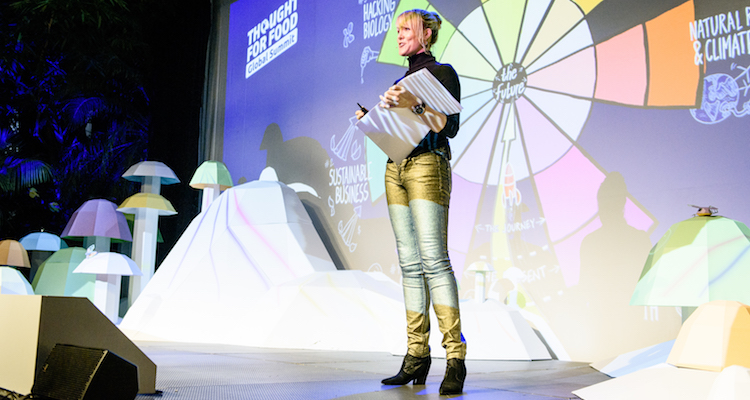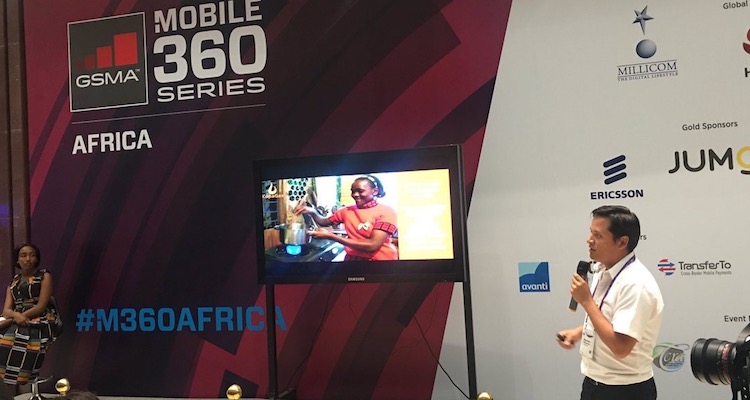Listen Now
Similar to essentially any other industry, the problem of efficiently collecting project or program level data that can be readily crunched, analyzed and, ultimately, used by managers for decision making has been, and will continue, to be a conundrum for the development and humanitarian aid community for the foreseeable future. I have often heard the frustration from professionals in the field, who wonder out loud why we haven’t be able to put together one, or perhaps a small set of, technology solutions that can be used for monitoring any output, anytime. Beyond the actual technology itself, a key part of this conversation is the question of how to implement such a solution in a way that is not only relevant for a project, but also for the workers tasked with the actual data collection. And, going further, how to build a tool that doesn’t add a massive time burden to those who are already tasked with the impossible. Dimagi is one company who are attempting to solve these problems and today’s guest on the 110th Terms Of Reference Podcast, Mohini Bhavsar, is on the front lines for them in Dakar, Senegal. She is Dimagi’s Deputy Regional Director in West Africa and she has extensive experience supporting mHealth (or Mobile Health) projects at scale. Currently, she provides strategic guidance for scale-up and trainings for Dimagi’s largest mHealth projects in West Africa, including a partnership with Terre des Hommes in Burkina Faso for the implementation of a tablet based clinical diagnostic tool for eIMCI protocols, a pregnancy danger sign and referral management application developed with Africare in Senegal and a multi-pronged health services and stock management application developed with URC for community health workers in Benin. Dimagi currently hosts more than 13,000 users per month on their system. Formally based in India, from 2011 to 2014, Mohini supported over 50 local and international NGO partners pilot mHealth applications. She has worked closely with partners such as Catholic Relief Services, World Vision, Save the Children, and the Indian Council of Medical Research. Prior to Dimagi, Mohini worked with Tula Salud in Guatemala to evaluate and support scale-up of their mHealth initiatives. You can connect with Mohini here: https://sn.linkedin.com/in/mohinibhavsar https://twitter.com/mohlovn
IN TOR 110 YOU’LL LEARN ABOUT:
- What it’s like to provide a Platform as a Service solution for the development community in the field.
- The effects that technology has had on health care.
- The ‘pushing value’ of an integrated ICT4D space that includes governments, academia, private and nonprofit organizations.
- User centered design, and how Mohini led a diverse team into a platform with high usability scores by a strong focus on the user and their environment.
- How IT can help and the example of CommCare not only in the use of data, but optimizing the collection process.
- The value of feedback loops, and why it tends to pay off to focus on ‘closing the loop’ than on the data collection or processing systems.
- The challenges that technology brings, and ideas on how to standardize innovation.
OUR CONVERSATION INCLUDES THE FOLLOWING:
Organizations
- Dimagi http://www.dimagi.com
- Dimagi’s CommCare https://www.commcarehq.org
- MIT Media Lab
- Google Forms
- Internet.org
- Harvard Business Review (HBR)
- Seth Godin
- 99% Invisible
- Freakonomics
- Brain Pickings
Topics
- B Corporations
- Feedback Loop
- Data Applications for Health Care, Education and Agriculture
- Information and Communication Technologies for Development (ICT4D)
- Specialized Online Communities
- National Communications Infrastructure
- Economies of Scale
- Small and Medium Enterprises (SMEs)
- Data driven management
- User centered design
- Accredited Social Health Activist (ASHA)
Places
- Dakar, Senegal
- Boston
- Cambridge, MA
- Cape Town
- Kaushambi, India
- Malawi
- Guatemala
- Chad
- Mali
EPISODE CRIB NOTES
First Senegalese in TOR Dimagi is based off Cambridge, MA with offices in Asia, Africa, Central America. “We build mobile technology solutions” for organizations and governments. Focus on women, particularly local women who provide primary health care. Automated job aids collect data for machine learning in near real time. “Feedback loop time is greatly reduced.“ It records health trends as well as practitioners’ performance. Data solutions for agriculture and education ventures also. The B-Corps Dimagi is a “B Corporation.” Double bottom line? Impact comes before financial sustainability. Dimagi spun off from MIT Media Lab. From early on, the use of data had a clear positive impact on performance and quality of health care. “But we wanted to push the game further.“ In the competitive data-based apps for development space “It’s exciting to see the ICT4D space.“ Dimagi excels at data collection, speed of feedback and the scope of time available in the data. Health Care workers have a personalized checklist (within the system?), as well as patients. Platform is highly user-friendly also, non-developers can customize it and build an interface. The case of expert specialists, IT friendly non developer’s demo Anyone can sign up on CommCare. It features online courses on how to use it. “[CommCare] is like an advanced Google Forms.” People deploy their own functionality and data shows the success of the usability. Low volume of email exchanges, user learns to rely on the website, documentation and communities. “People help each other.“ 300+ projects ongoing globally, over half of them self started. Account of real change In India, tracking “moms and babies.” It was the first that required effort on the app making experience, for ASHAs (health workers). A critical part of the success was the collaboration between workers. The app helped streamline the brief time each worker has with a patient, mainly by realizing the amount of time it takes to collect information with no upcoming use or that was already collected. Investing in user centered design proved essential. “That leads to understand how assumptions are almost never right, and how important it is to involve users.“ In Senegal, over 300 healthcare workers use CommCare for maternal care. Pooling data revealed impactful local factors that have a noticeable impact on the chances of survival. At first the design focused on the activities nurses perform with patients. “Soon we realized this is only a very small window.” From conversations with nurses they realized the value of involving new resources and features. The deep feedback loop transfigures Stephen: an efficient system of learning from data is what gives data value. Dimagi’s current effort is to scale up existing initiatives to a national reach. Governments and NGOs are investing in the infrastructure that will get them there, while Dimagi advances in functionalities and processes. Penetration goes from health care workers up, their supervisors’ functionality and automation needs, like making sure workers are actually providing service. How to close the loops. Automate the measurement of quality. The system reveals outlier information. Prompt medical alerts could prepare the system to deal with outbreaks early on. Currently some of the supervisors’ apps pull data from the health workers’ to track aggregate trends. Dimagi is born a disruption Stephen: connectivity initiatives, a la internet.org, have a big role in access to information, functionality and data processing services. Increasing coverage creates economies of scale, new functionality is trivial. Another kind of expansion involves monitoring devices. CommCare is becoming easier to pair up with body sensors and scanners, and to other apps. Who at Dimagi leads innovation? “Innovation is driven by the individual.“ Dimagi is a ~100 people company globally, very diverse background of engineers and project managers. Experts spend a lot of time in contact with the field and lot of them join with years of background on the problems Dimagi intends to solve. Financials “We are funded largely by donors.“ Many government partnerships at ministerial levels. A few SMEs have paying subscriptions. Operating expenses include an R&D bracket. For technical specific projects, the funder provides an R&D component. Solutions arising from specific projects roll enterprise wide. “Many data innovations affect the development of the platform. It sort of trickles down. It keeps evolving.“ Road to standard “We’re a complex organization“. There is the company, the platform and building tool, the app catalogue. “Turning innovation into standard ops is a hard question to answer.“ A specific app does have a clear pipeline. Health care workers’ information and functionality requirements share commonalities globally, apps begin on a standard template, over which each locality adapts in varying degrees of depth, language being one of the main customizations. “This helps to deploy faster.“ Protocols still remain a challenge when a platform caters to teams in diverse places and situations. Technology makes things better, easier and faster but not always Stephen: technology is a living, breathing thing, development is ongoing, around itself and culture. While it is becoming easier to familiarize an organization with a framework, it is still not without its hurdles. Risk management is also a factor. Issues that only receive consideration once they occur is an ongoing reality. Data driven management. “At some point your impact scope needs to broaden beyond the app.“ Mohini’s faves Professional development on the team member. HBR. Seth Godin “always inspires me.“ Podcasts: 99% Invisible, Freakonomics. Brain Pickings. Keep thinking on the development paradigm, going from a push to a pull-based approach. Let communities choose or be able to demand the content they need.Please share, participate and leave feedback below!
If you have any feedback you’d like to share for me or Mohini, please leave your thoughts in the comment section below! I read all of them and will definitely take part in the conversation. If you have any questions you’d like to ask me directly, head on over to the Ask Stephen section. Don’t be shy! Every question is important and I answer every single one. And, if you truly enjoyed this episode and want to make sure others know about it, please share it now:[feather_share show=”facebook, twitter, linkedin, google_plus” hide=”reddit, pinterest, tumblr, mail”]
Also, ratings and reviews on iTunes are very helpful. Please take a moment to leave an honest review for The TOR Podcast!




